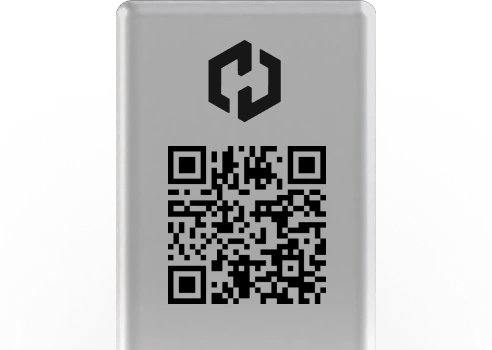Arbitrum, a project dedicated to solving scalability problems on the Ethereum blockchain, is a major player in the Layer 2 (L2) field.
Arbitrum is based on Optimistic Rollup, a Layer 2 technology that improves the performance and reduces the cost of transactions on the Ethereum blockchain, by combining smart contracts.
In practice, Optimistic Rollup enables transactions to be processed in two stages.
First, all transactions are performed on a secondary layer outside the main blockchain, where they are processed and verified.
Then, once all transactions have been processed, a proof is sent to the Ethereum blockchain to finalize the transactions.
This method enables multiple off-chain transactions to be processed in a single transaction on the main blockchain, significantly reducing transaction costs and increasing transaction processing speed.
Arbitrum’s story is one of perseverance, innovation and commitment to improving the blockchain ecosystem.
It goes back to the research on sidechains and Layer 2 conducted by various teams in the crypto ecosystem.
However, Arbitrum’s history as a Layer 2 scaling solution was specifically developed by Offchain Labs, a company founded by three brilliant minds: Steven Goldfeder, Harry Kalodner and Ed Felten.
Their journey to create Arbitrum is an example of innovation in blockchain.
The concept of Arbitrum emerged at a time when Ethereum, one of the most popular blockchains alongside Bitcoin(buy Bitcoin), was facing scalability issues.
Transaction confirmation times had become longer, and transaction fees had reached prohibitive levels.
This created a growing demand for scaling solutions to address these issues, and Arbitrum positioned itself as one such solution.
The project began to take shape when Steven Goldfeder, Harry Kalodner and Ed Felten joined forces to explore potential solutions to these challenges.
They all had impressive backgrounds in computer security, cryptography and blockchain research, making them a formidable team to tackle these complex problems.
The first idea that led to the creation of Arbitrum was to take advantage of the “rollup” design.
Rollups are Layer 2 scaling solutions that consolidate a large number of transactions into a single data point on the main blockchain, reducing congestion and transaction costs.
This approach was particularly innovative, as it offered an effective solution for improving scalability while leveraging the security of the main blockchain, in this case Ethereum.
Over the months, the team worked hard to develop and refine the technology behind Arbitrum. They conducted extensive research, wrote complex code and collaborated with other industry experts to ensure that their solution would live up to expectations.
Buy ARB tokens with Coinhouse.
The team at the helm of Arbitrum is made up of eminent personalities and renowned experts in the fields of blockchain, IT security and cryptography.
Here’s an overview of the key players who have helped make Arbitrum a reality: Steven Goldfeder, CEO of Arbitrum: Steven is a leading figure in computer security and cryptography.
He has published numerous cutting-edge research papers in these fields, and has built up a solid reputation as an expert.
Before embarking on the Arbitrum adventure, he obtained his PhD and was appointed Assistant Professor of Computer Science at Princeton University, where he continues to play a key role in teaching and research. Harry Kalodner, co-founder and CTO of Arbitrum: Harry is an expert in blockchain and cryptography.
Before co-founding Arbitrum, he worked as a researcher at Microsoft Research, where he focused on projects related to blockchain security and privacy.
His technical skills and experience in these fields were essential to the development of Arbitrum’s underlying technology. Ari Juels, Arbitrum’s co-founder: Ari is another prominent member of the Arbitrum team.
He is Professor of Electrical and Computer Engineering at Cornell University, where he also held the position of Director of the Computer Security Laboratory.
His knowledge of computer security and cryptography was invaluable to the project.
The Arbitrum team is complemented by many other talents and experts, each bringing his or her own expertise to advance the project.
Their commitment to improving the blockchain ecosystem and dedication to creating an efficient scaling solution have been key success factors for Arbitrum.
Arbitrum has become one of the most prominent Layer 2 scaling solutions in the Ethereum ecosystem.
Its story is an example of how innovation, perseverance and a talented team can make a significant contribution to the evolution of blockchain technology.
As the ecosystem continues to grow and develop, Arbitrum is well placed to play a central role in the future of blockchain scaling.
Arbitrum operates using an approach called Optimistic Rollup.
In this model, most transactions are executed off the Ethereum blockchain, then the results are submitted to Ethereum for verification.
This method significantly reduces transaction costs and speeds up confirmation times, while maintaining security.
In practice, Optimistic Rollup enables transactions to be processed in two stages.
First, all transactions are carried out on a secondary layer outside the main blockchain, where they are processed and verified.
Then, once all transactions have been processed, a proof is sent to the Ethereum blockchain to finalize the transactions.
This method enables multiple off-chain transactions to be processed in a single transaction on the main blockchain, considerably reducing transaction costs and increasing transaction processing speed.
Arbitrum’s native tokens are called ARBs.
The creation of ARBs is essentially linked to the role of validators and the consensus mechanism used in the network.
Arbitrum uses a consensus mechanism called “Rollup”, which is a form of Optimistic Rollup.
Validators in the network are responsible for transaction validation and network security.
They are incentivized to behave well through ARB rewards.
These ARB rewards are generated by users paying transaction fees when they interact with Arbitrum.
A portion of these fees is then distributed to validators in the form of rewards for their work.
This creates a strong incentive for validators to keep the network healthy and secure.
In addition to rewards for validators, Arbitrum has also set up a token creation mechanism for developers of dApps (decentralized applications) using the platform.
Developers can be rewarded in ARB for their contributions to the ecosystem, encouraging the creation of new applications and the adoption of the platform. Using ARB tokens ARB tokens have several uses within the Arbitrum ecosystem: Payment of Transaction Fees: Users must pay transaction fees in ARB to carry out operations on the network, such as sending transactions, creating smart contracts, etc. These fees are used as an incentive to validate transactions.
These fees are used to encourage validators to keep the network secure. Staking: Arbitrum also offers the option of staking its ARB tokens.
Users can lock their tokens in the network to contribute to the security and smooth running of the network.
In return, they receive ARB rewards. Governance: ARB tokens can be used to participate in network governance decisions.
Token holders can vote on proposed protocol updates, parameter changes and other important decisions. Developer incentives: Developers of decentralized applications (dApps) can be rewarded in ARB for their contributions to the ecosystem.
This can encourage innovation and the creation of new dApps on the platform. Distribution of ARB tokens The initial distribution of ARB tokens was carried out during a private and public token sale.
This raised funds for Arbitrum’s development and attracted the attention of the crypto community.
However, Arbitrum also plans to distribute ARB tokens in a decentralized way to encourage community participation.
A significant proportion of ARB tokens are intended to be distributed to network validators as rewards for their work.
This ensures that the key players responsible for network security and stability are incentivized to do the right thing. Implications for users and investors Arbitrum tokenomics has significant implications for users and investors: Users: Arbitrum users must ensure that they hold ARB tokens to pay transaction fees. What’s more, by staking their tokens, they can earn rewards, which can be an incentive to maintain their commitment to the platform.
ARB token holders can also participate in network governance. Developers: app developers can earn ARB tokens by contributing to the ecosystem, which can be a way of funding the development of their projects. Investors: for investors, Arbitrum tokenomics can represent an investment opportunity.
The growing demand for ARB tokens linked to the increasing adoption of the platform could potentially increase the value of tokens.
Coinhouse expresses a positive view of Arbitrum as a Layer 2 solution widely adopted in the ecosystem.
Arbitrum’s current valuation is seen as an attractive opportunity for portfolio diversification, offering the possibility of choosing an altcoin likely to generate significant gains over the next few years.
It’s important to note that this type of asset carries risks, not least because of the fierce competition in this field.
However, when it comes to selecting a token to include in one’s portfolio, Coinhouse recommends analyzing the Total Value Locked (TVL), and for the time being, Arbitrum is leading the way ahead of its competitors.

















